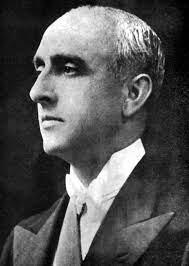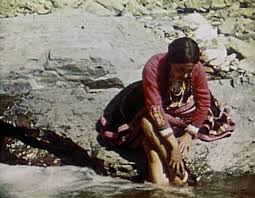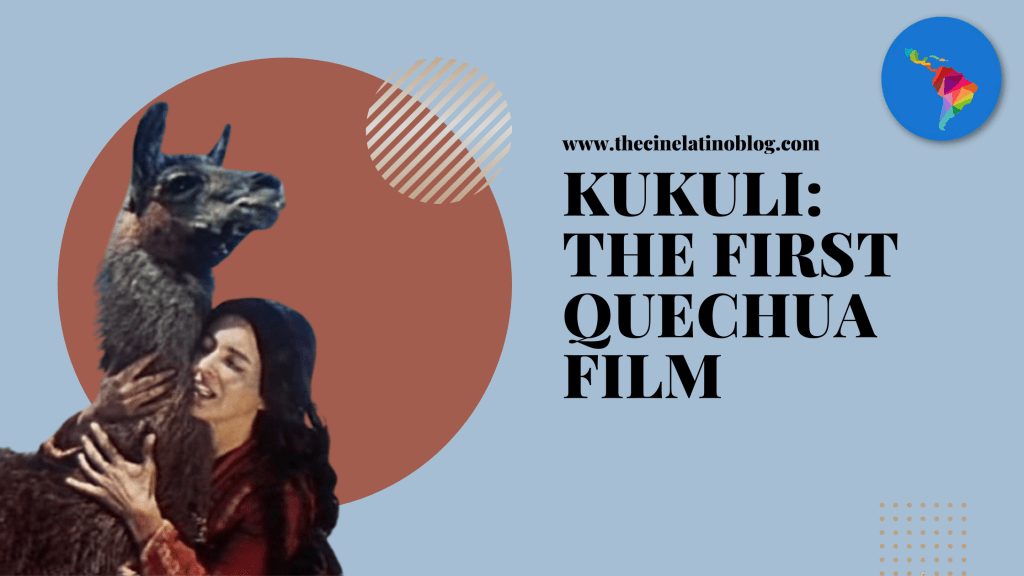Para la versión en español, cliquea aquí
This week I will be focusing on Peru with my theme being “Escaping Violence in Peru”. It’s a fascinating country with a rich history dating back to ancient times so a lot more people should look into their films.
Synopsis
Kukuli (1961) is the story of a young Incan woman who decides to go to the Festival de la Virgen del Carmen in the nearby town of Paucartambo. There she is taken and attacked by a carnival character and later reborn as a llama in the countryside.
Dictatorships and Reform

Peru was hit hard by the Depression and post-World War II marked an increase in foreign investment. After years of political infighting revolving around the socialist party APRA, Manuel Odria led a coup and became president in 1948. He introduced a plan that called for stringent credit and monetary policies, high central bank reserves, the closure of several large banks, and altered tax and customs codes. Constitutional guarantees were also suspended and by 1950 all apristas and communists had been forced underground. In spite of public displays of charity, a survey at the end of Odria’s presidency showed that almost half of the primary school children in the country did not have a desk in their school building. Odria was more interested in building projects. Monumental buildings such as the Ministries of Education, Commerce, and Labor were begun. In Peru’s 1949 budget, public spending increased by 45% from the year before, and between 1950 and 1955 public spending amounted to 13% of Peru’s annual gross national product. This brought on inflation and by 1956 the cost of living was twice as high as in 1948. Former presidents Prado and Bustamente returned to Peru and aligned under a new party, the National Coalition.

Another candidate, Fernando Belaunde Terry gained popular support from Peru’s youth. Odria saw Belaunde Terry as a threat so his regime pressured the National Election Jury to stall his registration. Belaunde Terry called for a mass rally in Lima but the police were ready and fired tear gas and water from fire hoses into the crowd. Belaunde Terry seized a Peruvian flag and marched forward to confront the members of the National Jury. The jury were forced to recognize his party, but it was Manuel Prado who won reelection in 1956 with the support of APRA. Prado opened democratic avenues. apristas. He also created the Institute for Agrarian Reform and Colonization. When he became president, Peru was importing ¼ of its consumer goods and half of its capital goods.
As a consequence, dollar reserves at the Central Bank dwindled and Prado became a market-oriented president, perhaps Peru’s first attempt at neoliberalism. The economy started to suffer and calls for agrarian reform were ignored. Between 1940 and 1961, Peru’s urban population had grown three times as much as the rural population. With Odria and Prado only being interested in catering to an industrialized, urban population, these calls for agrarian reform would only be answered in the late 1960s.
The Documentary

It’s important to talk about the group of filmmakers who made this film in order to truly understand it. This small but mighty group of filmmakers were known as the Cuzco group and they were active between the 1950s and the 1960s when the government was not ready to listen to the plight of the native people. Their two main objectives were to promote local issues and to create noncommercial oeuvres. Both of these goals were achieved in this film. Even though 40% of Peruvians spoke Quechua at the time this film was made, the government did not want to acknowledge them. That is why the first part of the film plays more like a documentary than a drama. These filmmakers were trying to establish a radical idea that the Incan people were worthy of being studied and understood. The documentary aspect of the film follows their routines and rituals and suggests that their history is just as valid as Peru’s mestizo history. The film’s style also takes its cues from European neorealist styles rather than Hollywood unlike many of Peru’s films at the time. From that moment, Kukuli set its style apart from others and created the foundations for native Andean filmmaking for directors like Jorge Sanjines of Bolivia. Its importance cannot be understated.
The Myth

The latter part of the film takes a much more dramatic turn and finds its inspiration in a famous Andean myth, “El Oso Raptor” or “The Raptor Bear”. The original story is about a beautiful Campesina woman who is taken to a cave by a bear. The bear forces her to stay and rapes her. From that assault, a child is born who eventually rebels against his father, takes his mother away to her original village, and later kills his father. Many people originally interpreted the story as a cautionary tale about an indigenous girl’s first sexual encounter, but others have found different interpretations. The bear is seen as a conquistador and his son is like the many mestizo children of conquistadors who can choose to be an oppressor or side with the oppressed. The fact that the myth is placed in a mestizo environment like the Festival de la Virgen del Carmen suggests that that interpretation is closer to reality. It is there in the procession that the bear appears to Kukuli, not in her original village. The filmmakers suggest that it is the colonized world that corrupts the Incan world and not the other way around. Though this is not an entirely faithful adaptation of the myth. Kukuli does not have a hybrid son and she ends up dead but not defeated. Though she dies, the film suggests she comes back to life in the form of a llama, once again in her village. No matter what is thrown at indigenous people, they come back even more connected to their land. Nothing can take them away.



One response to “Kukuli: The First Quechua Film”
[…] For the English version, click here […]
LikeLiked by 1 person